- Home
- Piers Anthony
Refugee Page 7
Refugee Read online
Page 7
On the other hand, we couldn’t let the saucer go without being in trouble again. It was similar to the way I had grabbed the scion’s foot, really incapacitating us both. Only then he’d drawn the laser—
Oops! If he had a laser now—
No, that seemed unlikely. No laser cannon was mounted on the saucer itself, as lasers weren’t very useful for cutting this ice of the mine. It simply melted, flowed, and refroze in an instant, absorbing an enormous amount of energy in the process. It takes as much energy for a laser to do its work as it does to do the work any other way; there is no such thing as free power, other than what we draw from the sunlight. So the ice had to be cut physically, without wasteful heating.
Anyway, if the scion had had a laser, he would have used it instead of the clumsy blasting cylinders. So it seemed we really had evened the odds.
Then my mind, which never knows when to stop, brought up another thought: The scion could have a laser in the cockpit, but not have used it because that would have holed up our suits and killed us without destroying the evidence of the murder. A person or a family could run afoul of blasting cylinders by error, perhaps, but there had to be another party to fire a laser at five separate people. So I could not afford any complacency on that score.
The transporter reached the ice mine, hauling the saucer along on its tether. On the shallow-crater region of the planet the saucer had the advantage, when it was loose, for there was no place for a vehicle to hide or avoid it. But the mine was deep, convoluted, and jagged, not having had the necessary billion years or so to melt into anonymity. This terrain was no picnic for a ground vehicle, but it was downright dangerous for a low-flying saucer on a tether. If we let the scion go here, he would probably just have to float home.
But if we did that, and the saucer did not go home, we would be trapped in the mine, unable to proceed to our rendezvous with the bubble. Safety in the mine was no good when we had a time limit for crossing the landscape. The saucer could hover indefinitely, outwaiting us. We had no great supplies of food or water, and in any event had to reach the bootleg bubble before it departed without us. So we had to hang onto the saucer. But could we haul it all the way to the bubble? That was unlikely—and if we did, the operator of the bubble might decide to take off before we arrived, fearful that the saucer represented the authority of an official. Our predicament had changed its nature, but not its urgency.
My father was no expert driver, since few peasants ever got much practice with vehicles of any type, and his legs had to be tired from all that pedaling, but he was strongly motivated. Spirit and I came to the brink of the mine and watched the action. There were roads winding around and down past tiers of blank ice walls, and the whole cavity was like a giant inverted dome, with high ridges of ice-rock projecting between many of the levels and spires rising where there were turnarounds. Any of these could smash up the saucer pretty badly, if it happened to be unlucky enough to collide with them. The gravity lens made the saucer light, but it could not change its mass; a crackup would be just as devastating as one in full gravity.
The winding roads were designed for exactly the kind of vehicle my father was driving, by no coincidence, so now he had the advantage of the terrain. He wheeled around the spires, dragging the saucer along, trying to snag it on a projection. He knew it was not safe to let the saucer go, and he was not a forgiving man. The scion had tried to kill him; he would now try to put away the scion. I felt a certain horrified elation of battle, and pride for my father. He was normally a reasonable man, but the time for reason had passed. Spirit and I had humiliated Sierra before; my father was out to finish him.
But the saucer followed, skillfully maneuvering around the obstructions, keeping the rope slack. Scions had plenty of leisure to learn to master their craft; this one floated with precision. I saw that this tactic wasn’t going to be enough. There were too many open spaces in the mine, and the moment the saucer had the chance to get clear, as it might by snagging the rope on a sharp edge of ice-rock so that it would saw through the rope, or if there were any alternate way to drop a bomb—
My eye was distracted by Spirit’s motion. There were whole piles of ice-rock fragments that had been bulldozed clear of the roads, and she was checking through one. She was always curious about things. How could I blame her? I had the same attitude.
She saw me watching and made a throwing motion, empty-handed. Then I caught on. These rocks were weapons!
We started in with a will, hurling head-sized rocks at the saucer. The quarter-gravity and irregular edges made it easier to grasp and throw large pieces, but they didn’t go very fast and our aim wasn’t very good. Again we faced the problem of mass: Weight is only one element of substance, one of its many dimensions, and it was as hard to accelerate a large chunk here as it would have been in full gee. Maybe harder, for the weight we did heft caused our muscles to assume that this was the amount of mass we had to throw, so we constantly misjudged it. Soon we shifted to smaller chunks and schooled ourselves to overthrow, and then we got the range and power and began scoring on the saucer as it trailed the transporter in a diminishing spiral down into the center of the mine. Those rocks might be light and slow, but they were as ornery in their stopping as in their starting, and solid enough to dent the saucer’s metal hide and shake the whole mass of it as they struck.
A bomb exploded below the saucer, and we knew one of our rocks had jogged it out of the hold. Those capsules were only lightly anchored, so that the pincers could take them without risk of setting them off; now they were being shaken loose, and that could mean a whole lot of trouble for the pilot.
Still, it wasn’t good enough. The saucer was getting too far away from us, so our rocks were losing accuracy and effect. We had to keep up the distraction, or it would get above the transporter and shake loose a bomb. This would be difficult and risky with its pincers incapacitated, but if any bombs were floating free in its hold the scion needed to get rid of them anyway. Certainly it was too much of a risk for us to tolerate. That wasn’t just a transporter down there; that was our family.
We jumped down the slopes, bounding from level to level, as each was separated from the next by only two or three meters. Soon we were back in range, because we were going straight in, while the vehicles were traveling in spirals. A straight line really is the shortest distance between two points.
Then I saw that they were approaching a major staging area, where the various vehicles normally operating in the mine could load and turn around. Here the saucer would have plenty of maneuvering room. I’m sure my father would have avoided this region, but he lacked our vantage and probably could not see it coming, and in any event his road was curving right to it without any turnoff. We had to resume our barrage, keeping the saucer occupied.
But as they entered the clear area, while Spirit and I desperately hurled more ice-rocks, the saucer dropped almost to the floor of the mine. Had its gravity lens malfunctioned? I doubted it, because those units were very stable and reliable. They resembled, in a fashion, permanent magnets, and lasted almost indefinitely once activated, requiring no external source of power. That was part of what made them so useful. A gravity lens is like a sail on an ancient Earth ship, a tool to utilize the forces around it. A sail taps the immense power of moving air; a lens does the same with the ubiquitous gravity in the universe. Neither sail nor lens is likely to break down if properly used.
A beam speared out from the saucer. Oh, no! My mental reservation had been correct. The scion did have another hand laser, and now he was firing through the transparent forward port. This was not the most effective way to use a laser, because of the dispersion caused by the glass, but even a weakened beam could readily hole a suit. Presumably the exigency of the moment forced the scion to get out of this trap any way he could; maybe if he killed my father with the laser, he would then have leisure to shake loose a bomb and cover up the evidence. The threat was immediate.
Spirit touched her helmet to mine. “I
’ll foul the glass!” she cried.
“You can’t go down there!” I protested.
I should have known better. She was already taking off, carrying an ice stone. Spirit seldom let the voice of reason stand in the way of direct action. I leaped after her, knowing this was folly; the scion’s laser would spear her before she ever got close to the glass. But she had a lead on me, and she was an athletic elf and I couldn’t catch her. We both went tumble-running down almost on top of the saucer, carrying our rocks. Spirit took a final leap and landed on the low saucer. She had excellent spacial judgment that way. I did not. I missed.
Naturally she was affected by the gravity lens when she touched the saucer’s surface. The typical lens makes an onion-shaped distortion in the gravity-wave pattern, into which the saucer or other object using the lens nestles. Above, that distortion narrows and winks out as the gravity pattern reasserts itself. Gravity is powerful, ornery stuff, despite its reputation as the weakest of the four universal forces; it can never be actually abolished, it can only be channeled slightly. If this were not so, true gravity shields would disrupt the natural order horribly. Imagine the havoc that could be wrought in an atmosphere, for example; the gas above the shield would be literally blown out of its world by the pressure of the surrounding gas. Perhaps a monstrous whirlpool or tornado would form around that dreadful leak, funneling the atmosphere out into space until it all was gone, leaving the planet denuded and as naked as was Callisto. Lenses would be terrible weapons, with the potential to suffocate whole inhabited worlds. An enemy could simply drop a lens from space and let it wreak its havoc as it descended, since it itself would be subject to natural gravity and not be thrown clear of the planet. Well, maybe it would have to be tied down, to prevent being sucked up by the tornado it caused. A minor detail. And of course the first huge, crude lenses had caused considerable mischief, since their onion tops had projected so high that there was some of that tornado effect. But fortunately the modern lenses were crafted to wink out at their tops fairly expeditiously, just a few meters from their lenses, and very little atmosphere was affected. Here on an airless world that didn’t matter, of course, but it remained, to my mind, a significant matter. The Colossus Jupiter would hardly allow lenses to be used on the moons that had the potential to disrupt Jupiter’s own atmosphere if dumped there accidentally or otherwise. There is obviously much politics in physics.
At any rate, Spirit lost her weight and had trouble staying on the saucer. Then she caught hold of the ladder—dents that were there for workers, and was secure. The dents actually curved inside the skin of the saucer, so that finger holds were convenient. Sometimes it was necessary for a person in a suit to ride a saucer outside, as when helping to load it, so that was facilitated. A weightless person could normally support himself by one finger; even the slightest anchorage was all that was necessary.
I came to the foot of the slope and tried to be inconspicuous. I didn’t know what to do at the moment, but had to be ready to do whatever offered, when it offered. I couldn’t throw rocks for fear of hitting my sister, yet if I didn’t, that laser might get her. I was terrified for Spirit, but was helpless.
I should clarify that the telling of this requires much more time than the action did. Obviously the saucer was not sitting there quiescently for ten minutes while we set up to smudge its window. It may have been as little as thirty seconds, while the scion was trying to get into better position for a killing shot at my father.
Spirit squirmed across the saucer roof, awkward in her suit. Then she reached down to the front vision port and smeared her ice-rock across it. The glass was super-tough and scratch-resistant, but some of the dust in the ice smeared. Maybe enough heat from the cabin radiated through the glass to cause the surface of the ice to melt a little.
It took the scion inside a moment to realize what was happening. Maybe he had felt the impact of Spirit’s landing and assumed it was another big rock. The saucer was now so low that I could see his shape behind the glass. Then, furious, he aimed his hand laser at Spirit.
I don’t remember digging out my own laser again, the one I had, ironically, acquired from him after our first encounter and tried to use to detonate one of the bombs. I had had it fastened in a compartment in my suit belt; now it was in my hand, as if possessed of its own volition. I pointed it at the glass, steadied my hand, and squeezed off a ray.
I don’t think my beam could have had any deadly effect. I had only a mini-laser, with a little power, and the angle wasn’t good, and the glass was dirty thanks to Spirit’s continuing effort. But the ray could have splayed as it passed through the glass and temporarily blinded the scion inside. At any rate, he didn’t fire again, and Spirit was able to finish her smearing job without getting her suit holed, no thanks to her impetuosity.
I scrambled across and pulled her off the saucer at last, not wanting her to take any more such chances. “We have to get away from here before he radios for help!” I yelled as we touched helmets.
She nodded, understanding. We moved to the transporter, where my father was unloading. He knew we couldn’t get that vehicle out of danger in time, uphill around and around the spiral roads of the mine. We had to abandon ship, as it were. We all got our belongings into our packs and strapped the packs on. Then my father started the transporter, fixing its steering wheel, and sent it rolling down a slope toward a drop-off. As the brink neared, he disengaged from the pedals and jumped free, letting the vehicle’s inertia carry it and the trailing saucer over the edge, down the steep embankment beyond the staging area. With luck, both it and the saucer would wreck, and any pursuers would assume we all were dead—at least until it was too late to matter.
But the wrench did not drag the saucer down. The rope broke. Maybe it had been frayed in the course of the descent into the mine. The saucer drifted free at last, dangling a meter of rope, its pincers twisted crooked. It could not drop bombs, but once its occupant recovered, that saucer could be dangerous again. Too bad, I thought ungraciously.
My father led the way through the mine. He had been here before; in his youth he had worked here, before he got the more pleasant and safer job in the coffee dome. I realized that age could be an advantage; it provided time for broader experience. The particular configurations of the mine would have changed considerably in the intervening years, but not its basic nature.
We saw two lights coming over the mine’s horizon. There were the scion’s allies! Probably other spoiled, rich, arrogant youths like him. I jogged my father’s arm and pointed.
He looked and broke into a run. We followed, though running is not fun in space suits; it’s not the weight but the clumsiness, since they are not as flexible as human bodies and one must run spraddle-legged. But we had to get to cover in a hurry.
Soon we came to a sort of crevice in the ice wall, broad enough for a man to enter. We plunged in, getting out of view of the saucers, and worked our way along it until we were safe from any discovery from above. We were lost in the deep shadow of the crack in the ice.
This was just as well, for through the crack I could see one of the saucers casting about. They were looking for us, certainly.
The crevice closed in tighter, so that we had to squeeze along in single file. I began to get claustrophobic; I was somehow afraid the separation in the ice would close up again, crushing everything within it. Of course I knew better; Callisto is a dead world, as these things go, with no volcanism or plate tectonics; even a tiny crack could remain undisturbed for a billion years if man did not interfere. Such fears are not rational, but the perception of their irrationality does not necessarily make them depart. I willed myself to react sensibly; the planet presented no danger, but the saucers did.
That ice, as we slid along the walls, was extremely solid and cold; I felt its chill through my suit, psychologically. The space suits were insulated and heated, charged for forty-eight hours of continuous use—which was more than enough, since we had only twenty hours to reach the bubble
, to be sure of catching it before takeoff.
And there, more than likely, was the real source of my chill: We had used up two hours—and lost our vehicle. Here we were, stuck in an ice crevice; how could we ever reach the escape bubble in time?
Then we squeezed into a regular tunnel. The workmen had reamed out this section of the crevice, preparatory to the next blast. It was much easier to break off an iceberg along natural lines of cleavage, cracking it away largely without heat, but the charges had to be correctly placed, or the whole thing would break up into clumsy fragments. I understand there is a whole science of ice blasting that it takes many years to master, as with any really specialized discipline. The acquisition of water is too important to be entrusted to amateurs.
The tunnel cut deep into the bedrock ice, then stair-stepped up to the surface. There was no sign of the saucers. They had evidently given up the unpromising pursuit, uncertain after all whether we survived the demise of our vehicle and satisfied to get the scion back to the city before he got into any more trouble. That was our good fortune.
We had precious little other fortune, though. We would have an awful time crossing the surface of the barren planet afoot within our time limit.
My father pointed the direction to the center of the Valhalla Crater. He had a good sense of direction, but it really wasn’t difficult to fathom what we needed. All we had to do was proceed at right angles to the low rills that circled it. Of course, we weren’t going all the way to the center—far from it!—but this direction would take us to the smaller crater where the bubble was. Kilroy Crater.
We started off, making great low-gee bounds. We had a long way to go, and not enough time. Maybe.
At first it was easy enough. We covered many meters between landings despite the clumsiness of our suits. We sailed over the rolling ridges and down through shallow troughs. There is a technique to moving rapidly in low gee, and we were necessarily acquiring it. There is also a certain exhilaration to such velocity, a sensation of power; I thought of myself as some alien creature who existed naturally in these barrens, leaping from site to site searching out some completely inexplicable-in-human-terms item.

 Serial
Serial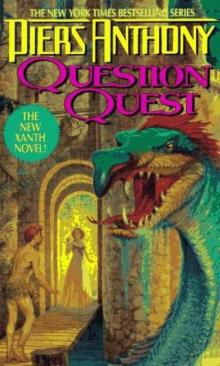 Question Quest
Question Quest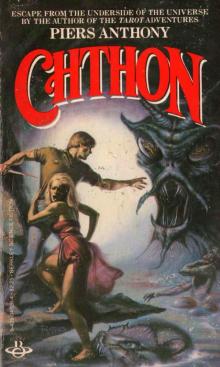 Chthon
Chthon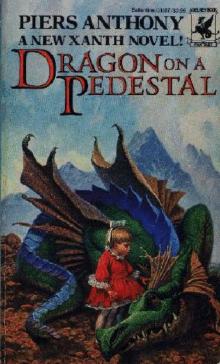 Dragon on a Pedestal
Dragon on a Pedestal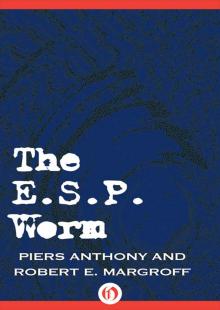 E. S. P. Worm
E. S. P. Worm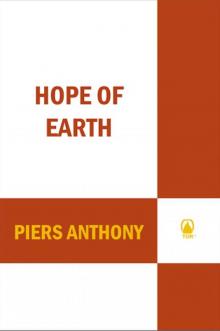 Hope of Earth
Hope of Earth The Series Boxed Set
The Series Boxed Set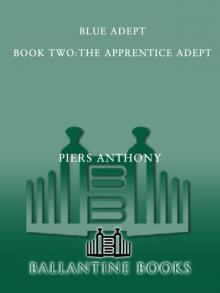 Blue Adept
Blue Adept The Sopaths
The Sopaths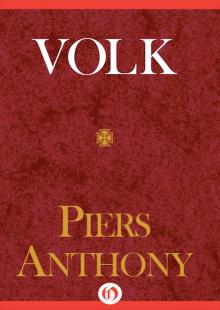 Beetle Juice
Beetle Juice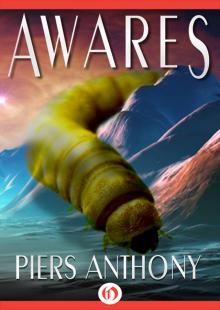 Awares
Awares Golem in the Gears
Golem in the Gears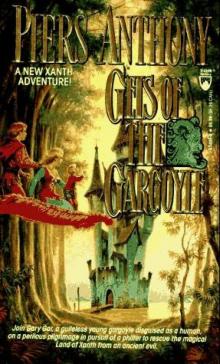 Geis of the Gargoyle
Geis of the Gargoyle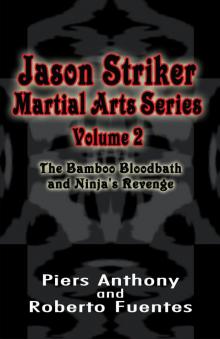 Bamboo Bloodbath and Ninja's Revenge
Bamboo Bloodbath and Ninja's Revenge Heaven Cent
Heaven Cent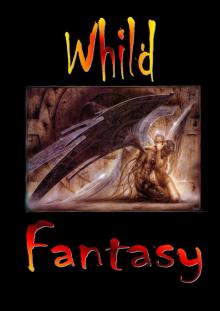 Neq the Sword
Neq the Sword Pandora Park
Pandora Park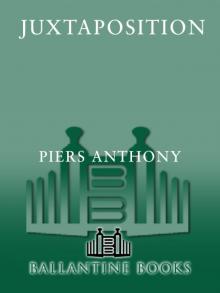 Juxtaposition
Juxtaposition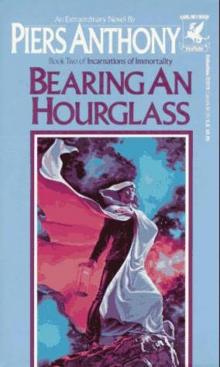 Bearing an Hourglass
Bearing an Hourglass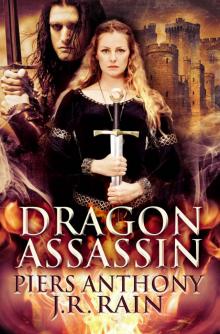 Dragon Assassin
Dragon Assassin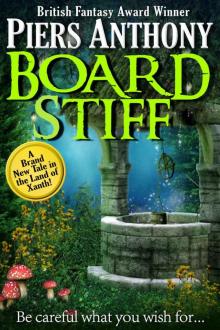 Board Stiff
Board Stiff Virtual Mode
Virtual Mode Castle Roogna
Castle Roogna Aliena Too
Aliena Too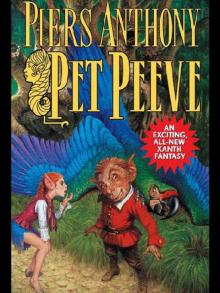 Pet Peeve
Pet Peeve The Metal Maiden Collection
The Metal Maiden Collection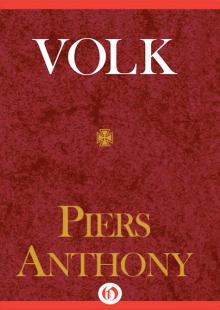 Volk
Volk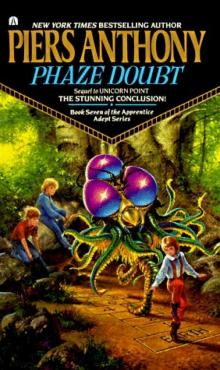 Phaze Doubt
Phaze Doubt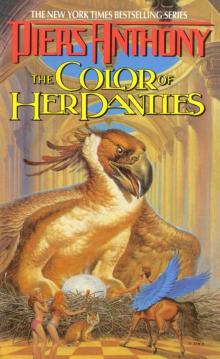 The Color of Her Panties
The Color of Her Panties Amazon Slaughter and Curse of the Ninja Piers Anthony
Amazon Slaughter and Curse of the Ninja Piers Anthony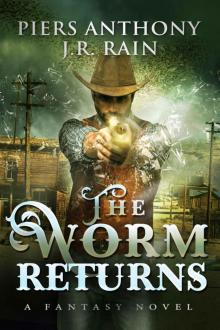 The Worm Returns
The Worm Returns Zombie Lover
Zombie Lover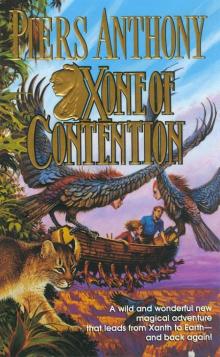 Xone of Contention
Xone of Contention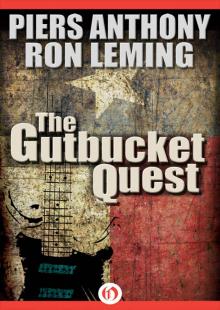 The Gutbucket Quest
The Gutbucket Quest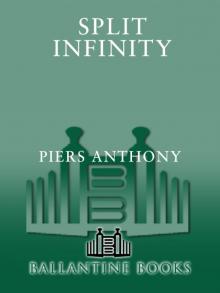 Split Infinity
Split Infinity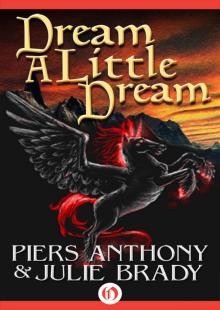 Dream a Little Dream: A Tale of Myth and Moonshine
Dream a Little Dream: A Tale of Myth and Moonshine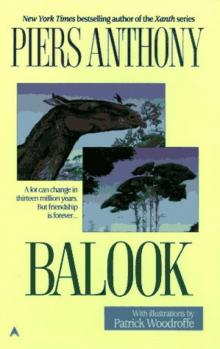 Balook
Balook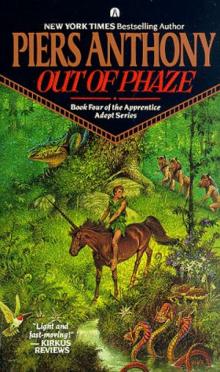 Out of Phaze
Out of Phaze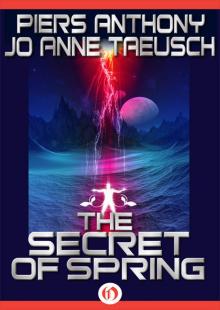 The Secret of Spring
The Secret of Spring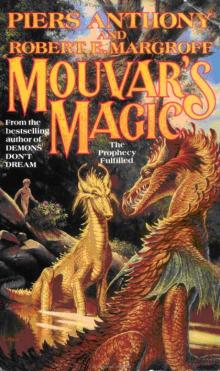 Mouvar's Magic
Mouvar's Magic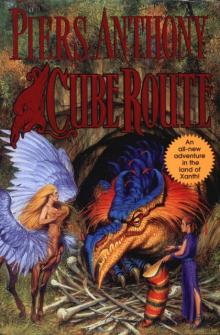 Cube Route
Cube Route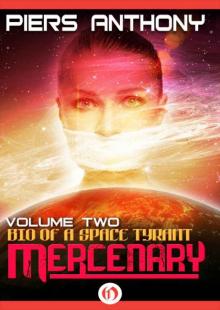 Mercenary
Mercenary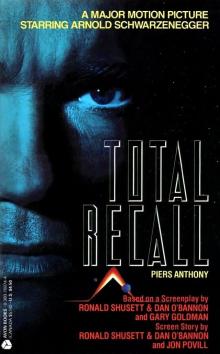 Total Recall
Total Recall Man From Mundania
Man From Mundania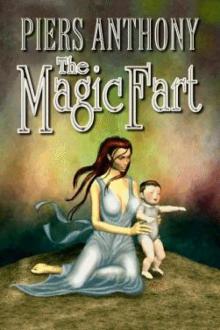 The Magic Fart
The Magic Fart Letters to Jenny
Letters to Jenny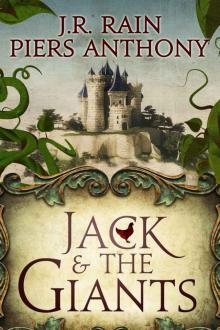 Jack and the Giants
Jack and the Giants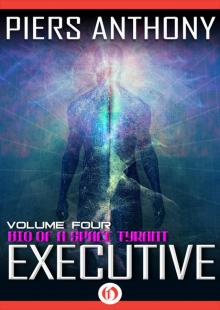 Executive
Executive Robot Adept
Robot Adept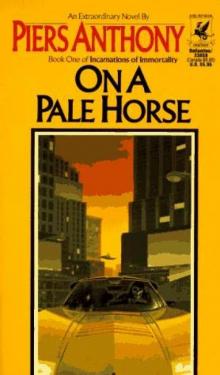 On A Pale Horse
On A Pale Horse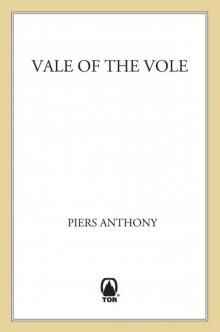 Vale of the Vole
Vale of the Vole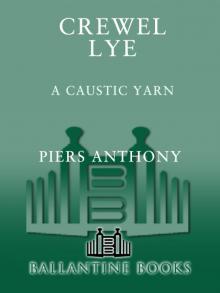 Crewel Lye
Crewel Lye For Love of Evil
For Love of Evil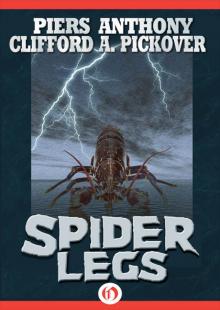 Spider Legs
Spider Legs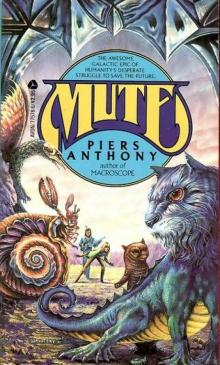 Mute
Mute Being a Green Mother
Being a Green Mother Hair Suite
Hair Suite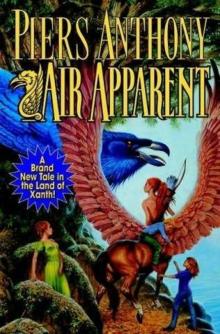 Air Apparent
Air Apparent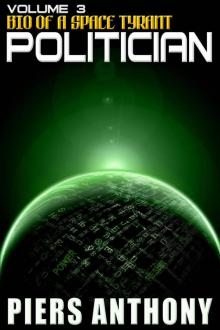 Politician
Politician Aliena
Aliena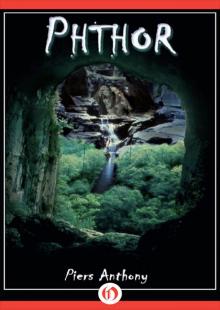 Phthor
Phthor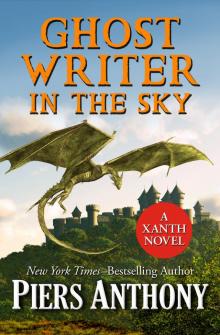 Ghost Writer in the Sky
Ghost Writer in the Sky Pornucopia
Pornucopia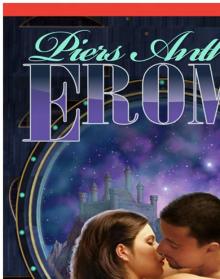 Eroma
Eroma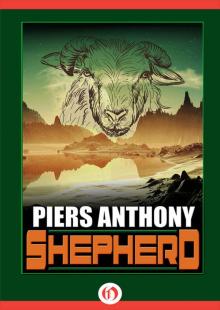 Shepherd
Shepherd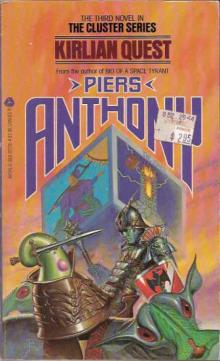 Kirlian Quest
Kirlian Quest Swell Foop
Swell Foop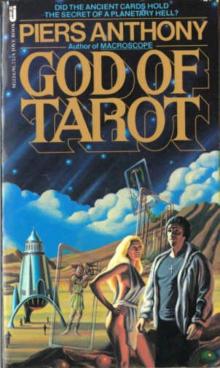 God of Tarot
God of Tarot If I Pay Thee Not in Gold
If I Pay Thee Not in Gold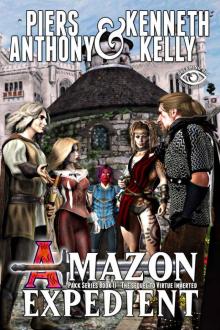 Amazon Expedient
Amazon Expedient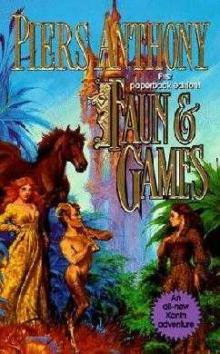 Faun & Games
Faun & Games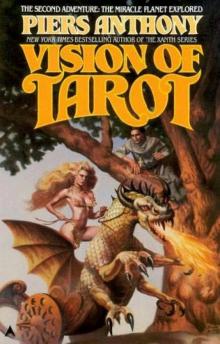 Vision of Tarot
Vision of Tarot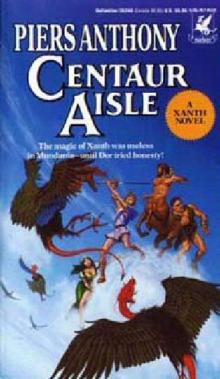 Centaur Aisle
Centaur Aisle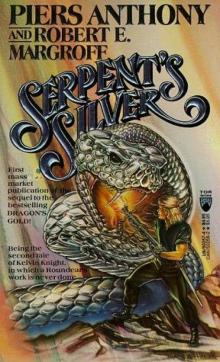 Serpent's Silver
Serpent's Silver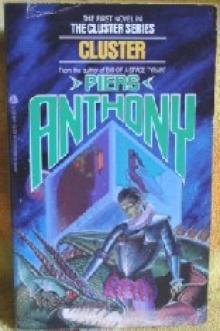 Cluster
Cluster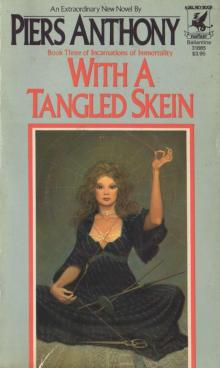 With a Tangled Skein
With a Tangled Skein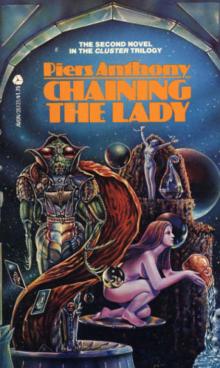 Chaining the Lady
Chaining the Lady Wielding a Red Sword
Wielding a Red Sword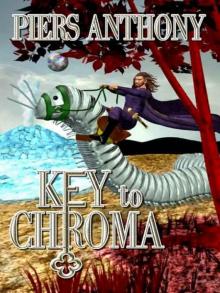 Key to Chroma
Key to Chroma WereWoman
WereWoman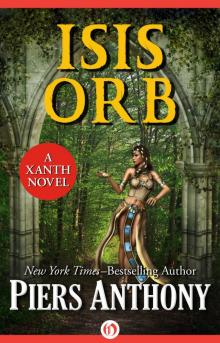 Isis Orb
Isis Orb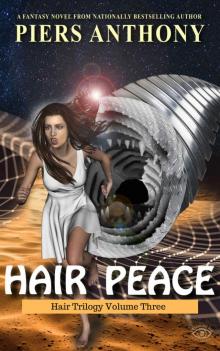 Hair Peace
Hair Peace Two to the Fifth
Two to the Fifth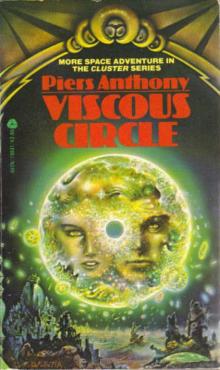 Viscous Circle
Viscous Circle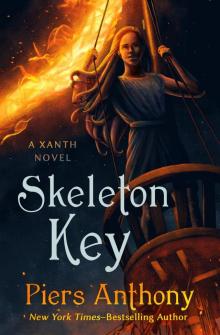 Skeleton Key
Skeleton Key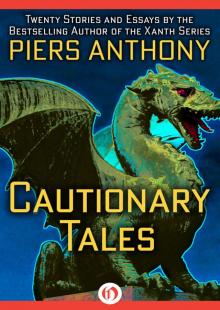 Cautionary Tales
Cautionary Tales The Source of Magic
The Source of Magic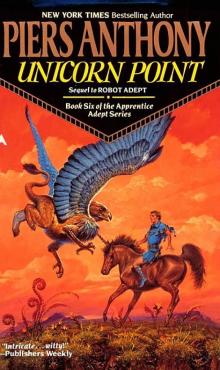 Unicorn Point
Unicorn Point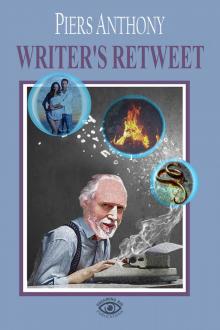 Writer's Retweet
Writer's Retweet Demons Don't Dream
Demons Don't Dream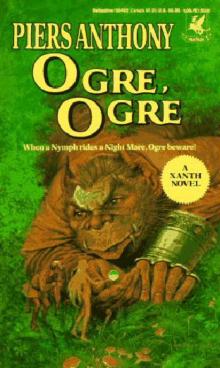 Ogre, Ogre
Ogre, Ogre The Iron Maiden
The Iron Maiden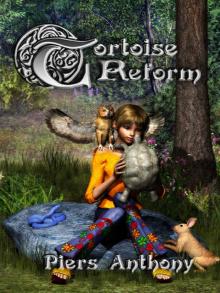 Tortoise Reform
Tortoise Reform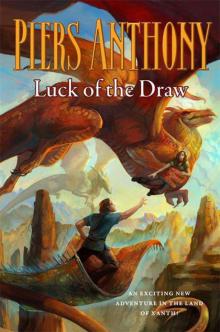 Luck of the Draw
Luck of the Draw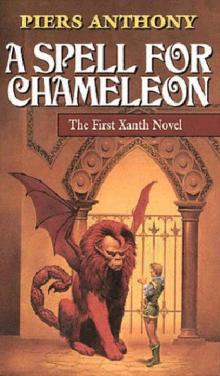 A Spell for Chameleon
A Spell for Chameleon Yon Ill Wind
Yon Ill Wind Currant Events
Currant Events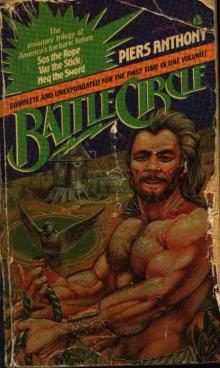 Var the Stick
Var the Stick And Eternity
And Eternity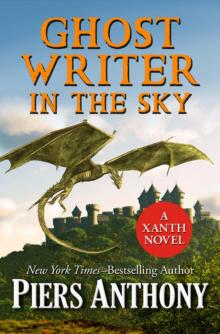 Kiai! & Mistress of Death
Kiai! & Mistress of Death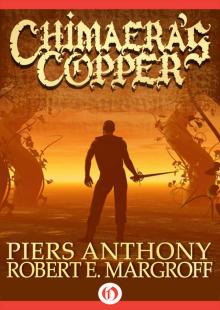 Chimaera's Copper
Chimaera's Copper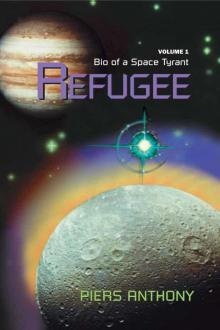 Refugee
Refugee Isle of View
Isle of View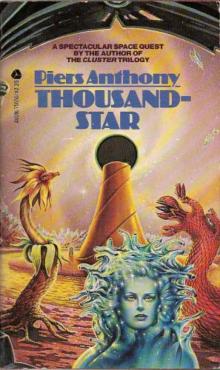 Thousandstar
Thousandstar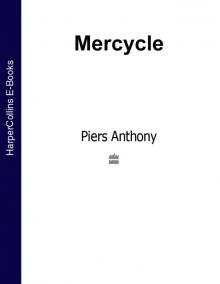 Mer-Cycle
Mer-Cycle Service Goat
Service Goat Five Portraits
Five Portraits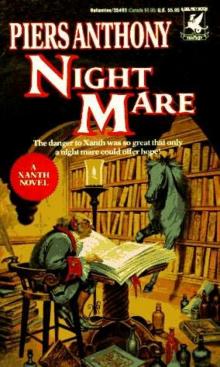 Night Mare
Night Mare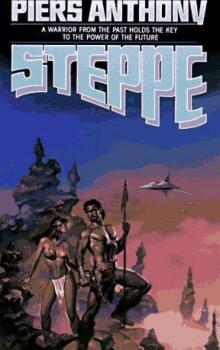 Steppe
Steppe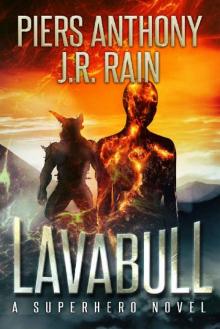 Lavabull
Lavabull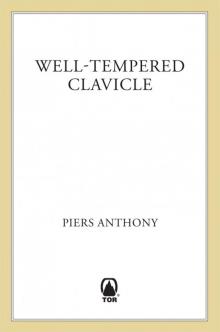 Well-Tempered Clavicle
Well-Tempered Clavicle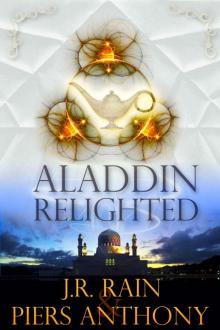 Aladdin Relighted
Aladdin Relighted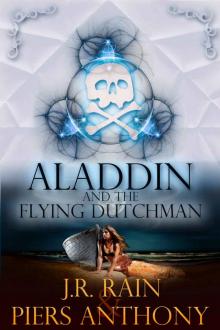 Aladdin and the Flying Dutchman
Aladdin and the Flying Dutchman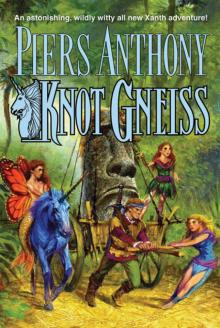 Knot Gneiss
Knot Gneiss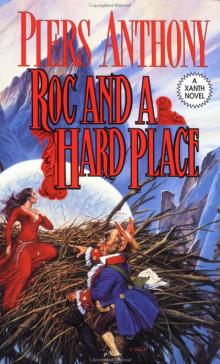 Roc and a Hard Place
Roc and a Hard Place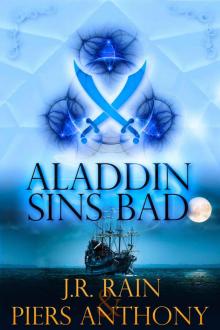 Aladdin Sins Bad
Aladdin Sins Bad Flytrap
Flytrap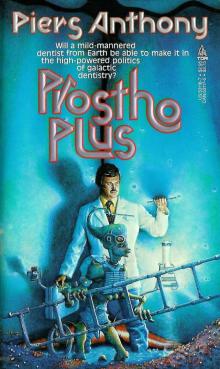 Prostho Plus
Prostho Plus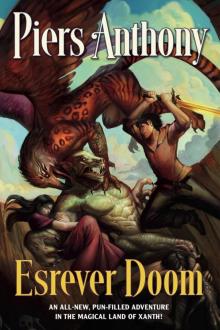 Esrever Doom
Esrever Doom Hair Power
Hair Power The Journey
The Journey Virtue Inverted
Virtue Inverted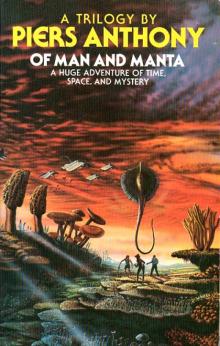 Of Man and Manta Omnibus
Of Man and Manta Omnibus Trail Mix: Amoeba
Trail Mix: Amoeba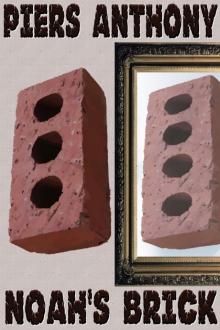 Noah's Brick
Noah's Brick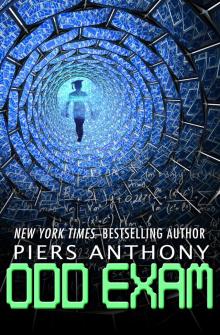 Odd Exam
Odd Exam Magenta Salvation
Magenta Salvation Jest Right
Jest Right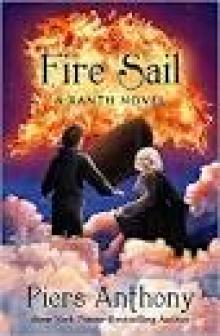 Fire Sail
Fire Sail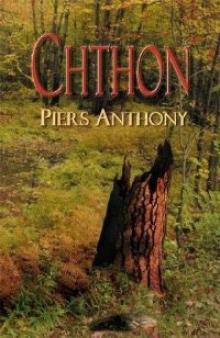 Chthon a-1
Chthon a-1 Amoeba
Amoeba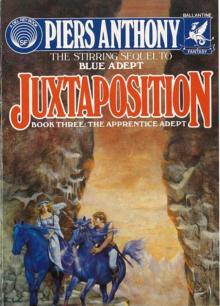 Juxtaposition aa-3
Juxtaposition aa-3 Pira
Pira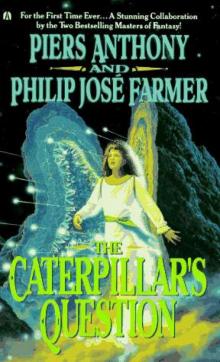 THE CATERPILLARS QUESTION
THE CATERPILLARS QUESTION What Fears Become: An Anthology from The Horror Zine
What Fears Become: An Anthology from The Horror Zine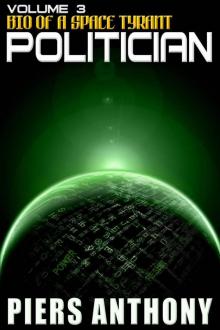 Bio of a Space Tyrant Vol. 3. Politician
Bio of a Space Tyrant Vol. 3. Politician Ogre Ogre x-5
Ogre Ogre x-5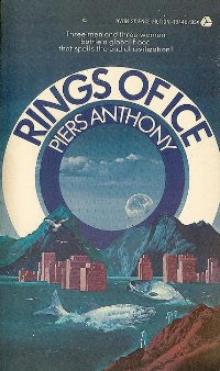 Rings of Ice
Rings of Ice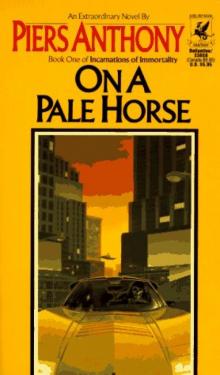 On a Pale Horse ioi-1
On a Pale Horse ioi-1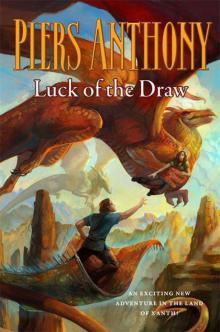 Luck of the Draw (Xanth)
Luck of the Draw (Xanth)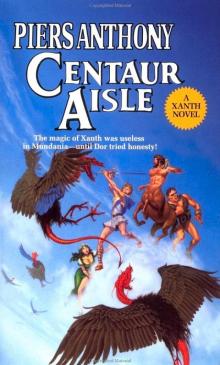 Centaur Aisle x-4
Centaur Aisle x-4 Thousandstar (#4 of the Cluster series)
Thousandstar (#4 of the Cluster series)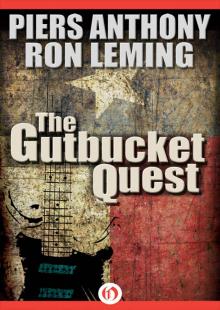 Gutbucket Quest
Gutbucket Quest Isle of Woman (Geodyssey)
Isle of Woman (Geodyssey)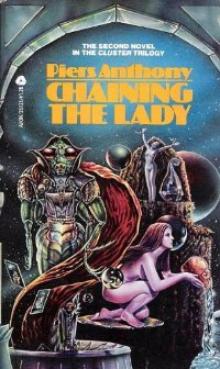 Chaining the Lady c-2
Chaining the Lady c-2 To Be a Woman
To Be a Woman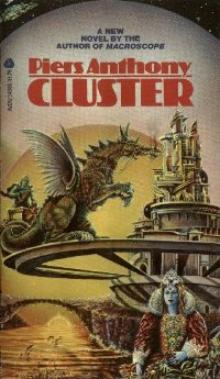 Cluster c-1
Cluster c-1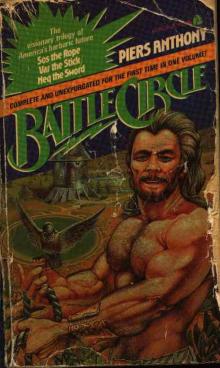 Battle Circle 2 - Var the Stick
Battle Circle 2 - Var the Stick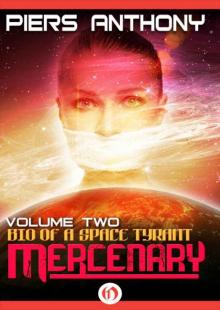 Mercenary (Bio of a Space Tyrant Book 2)
Mercenary (Bio of a Space Tyrant Book 2)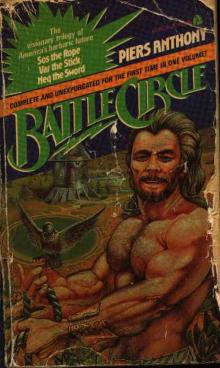 Battle Circle 1 - Sos the Rope
Battle Circle 1 - Sos the Rope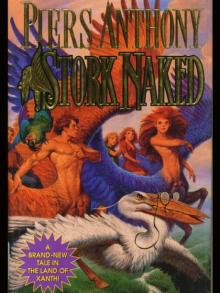 Xanth 30 - Stork Naked
Xanth 30 - Stork Naked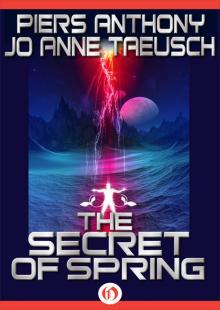 Secret of Spring
Secret of Spring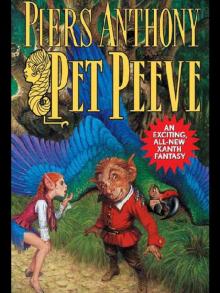 Xanth 29 - Pet Peeve
Xanth 29 - Pet Peeve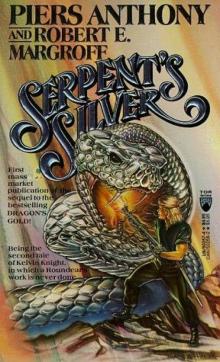 Serpents's Silver
Serpents's Silver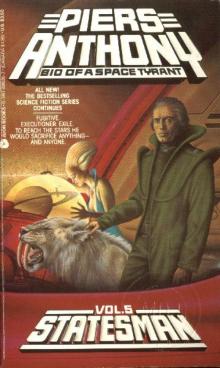 Statesman by Piers Anthony
Statesman by Piers Anthony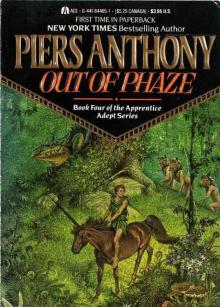 Out of Phaze aa-4
Out of Phaze aa-4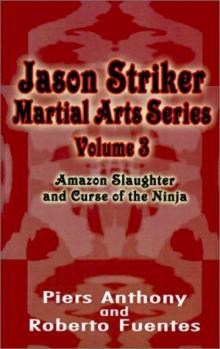 Amazon Slaughter & Curse of the Ninja
Amazon Slaughter & Curse of the Ninja